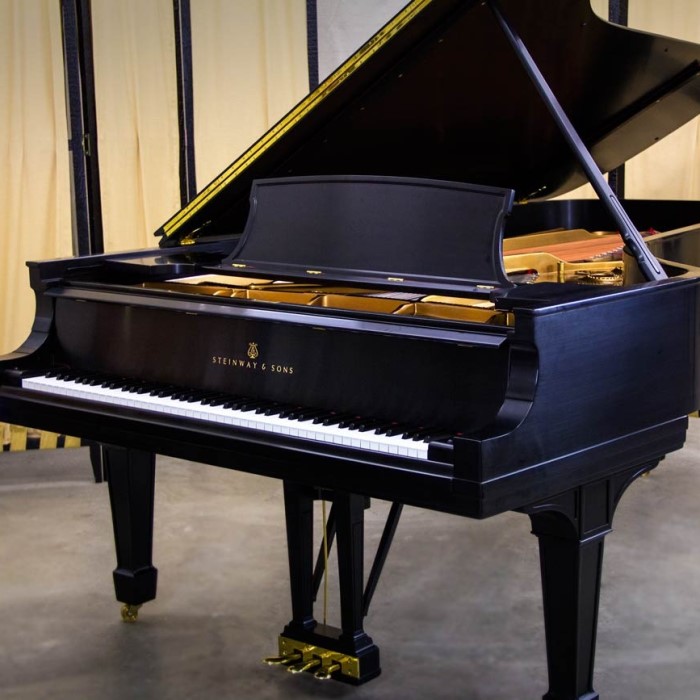Understanding Piano Weight
When it comes to acquiring a piano, one of the first questions people have is, how much does a piano weigh? The weight of a piano varies significantly based on its type and size. On average, a traditional acoustic piano weighs between 300 and 1,000 pounds. Grand pianos tend to be heavier than upright pianos. This weight is crucial for anyone planning to move a piano, whether it’s a simple relocation within a house or a transport to a new area. Understanding the weight will help in determining the resources and methods needed for a safe move.

Factors That Influence Piano Weight
A piano’s weight varies due to several important factors. Knowing these helps in choosing the right piano and handling it carefully. Here are three key aspects that influence how much a piano weighs.
Type and Size of Piano
The type and size of a piano play a major role in its weight. Upright pianos are usually smaller and lighter, ranging from 300 to 500 pounds. Grand pianos, being larger, can weigh 500 to over 1,000 pounds. Bigger pianos tend to have more components, increasing their overall weight. Digital pianos are much lighter, often under 100 pounds, making them portable.
Materials Used in Piano Construction
The materials used in constructing a piano significantly impact its weight. Traditional pianos are made with heavy hardwoods like maple and mahogany. These woods provide durability but add considerable weight. Strings, hammers, and the cast iron frame inside the piano also contribute to the overall weight. For digital pianos, lighter metal and plastic materials are commonly used, which reduce weight.
Additional Components and Accessories
A piano’s additional parts and features can change its weight. Pedals, decorative frames, and leg designs may add extra pounds. Advanced models with built-in sound systems or automation features also weigh more. Accessories like piano benches or covers don’t affect the piano directly but must be considered for overall weight during transport.
Average Weight of Different Types of Pianos
How much does a piano weigh? Understanding the average weight of different piano types can help in selecting the right one. Below are the typical weights of three common piano types.

Upright Piano Weight
Upright pianos are compact and popular for homes and smaller spaces. They generally weigh between 300 to 500 pounds. The weight varies depending on the height, width, and materials used in construction. Smaller upright pianos, such as spinet models, lean closer to 300 pounds. Larger studio models, exceeding 48 inches in height, can approach the higher range of 500 pounds or more.
Grand Piano Weight
Grand pianos are larger and more elaborate, making them heavier. Their weight typically ranges from 500 pounds to over 1,200 pounds. Compact baby grand pianos weigh around 500 to 600 pounds, while the largest concert grand pianos can reach up to 1,300 pounds. These pianos have large soundboards, heavy cast iron plates, and longer strings, which add to their weight.
Digital Piano Weight
Digital pianos are known for their lightweight and portable design. They generally weigh less than 100 pounds. Some smaller, portable models can weigh as little as 20 pounds. Full-size digital pianos with more features, like weighted keys or a stand, might weigh between 50 and 100 pounds. Lightweight materials like plastic and aluminum in their construction make them easier to move.
Moving a Piano: Weight Considerations
How much does a piano weigh? Moving a piano requires careful planning and execution. Its significant weight makes this task challenging.

Risks of Improper Handling
Improperly moving a piano can lead to serious damage and safety concerns. Here are some risks to consider:
- Piano Damage: Dropping or mishandling a piano can cause structural damage, affecting its sound quality.
- Injuries: Lifting a heavy piano without proper technique can result in muscle strains or serious injuries.
- Damage to Surroundings: Pianos can scratch floors, dent walls, or cause other accidents during the move.
- Tuning Issues: Rough handling can impact the internal mechanics, requiring professional tuning after the move.
Professional Piano Moving Services
Hiring a professional piano moving service can simplify the process. Here’s why they are essential:
- Expertise: Professionals are trained to handle heavy and delicate items like pianos.
- Specialized Equipment: They use moving tools like dollies, straps, and padding for safety.
- Insurance Protection: Professional movers often provide insurance, covering any accidental damages.
- Time-Efficiency: They save time by efficiently planning and executing the move.
- Safety Assurance: Ensuring the safety of both the piano and the movers reduces the risk of injury.
Whether you’re moving a lightweight digital piano or a heavy grand piano, careful planning is key. Consider the weight of the piano and use professional services for a safe and smooth experience.
Comparing Piano Weights by Brand and Models
How much does a piano weigh? When shopping for a piano, understanding how different brands and models vary in weight is important. This knowledge can help you identify the ideal piano to suit your needs and space requirements. The weight of a piano depends on design, materials, and intended use, with each brand offering distinct options.
Popular Brands and Their Piano Weights
Different brands produce pianos with diverse weights due to their unique designs and materials.
- Yamaha Pianos: Yamaha upright pianos generally weigh between 300 and 500 pounds. Grand pianos from Yamaha can range from 500 pounds for smaller models, like baby grand pianos, to over 1,200 pounds for concert models.
- Steinway & Sons: Renowned for their high-quality craftsmanship, Steinway pianos are known for their robust frames. Uprights weigh around 500 pounds, while grand pianos can exceed 1,200 pounds for the largest models.
- Kawai Pianos: Kawai digital pianos are lightweight, typically under 100 pounds. Their upright pianos range from 350 to 500 pounds, while grand pianos typically weigh between 500 and 1,100 pounds.
- Boston Pianos: A brand owned by Steinway, Boston upright pianos usually weigh between 400 and 500 pounds. Their grand pianos range from 500 to 1,100 pounds, depending on their size.
- B?sendorfer Pianos: Known for high-end models, B?sendorfer grand pianos often weigh over 1,000 pounds due to their luxurious materials and design. Their exotic pianos can weigh even more than the standard range.
Lightweight Piano Options
If portability is a priority, there are lightweight piano options to consider.
Digital Pianos
- Weight Range: Most digital pianos weigh under 100 pounds, making them relatively easy to manage compared to traditional acoustic pianos.
- Compact Models: Some compact digital piano models are incredibly lightweight, with weights as low as 20 pounds. This portability is ideal for musicians who need to transport their instruments frequently.
- Fully-Featured Designs: On the other hand, fully-featured digital pianos that come with built-in stands and pedals generally weigh between 50 to 100 pounds. These models offer more functionality and a realistic playing experience while still remaining manageable for most users.
- Brand Variety: Popular brands such as Yamaha, Casio, and Roland provide an extensive range of digital pianos, catering to various skill levels and musical preferences. Each brand focuses on different features, allowing musicians to find the perfect fit for their needs.
Spinet Pianos
- Weight Considerations: Small upright pianos, commonly known as spinet models, have a weight range of approximately 300 to 400 pounds. While this may seem heavy compared to digital options, they are still lighter than larger upright pianos.
- Space Efficiency: Their compact size makes spinet pianos particularly suitable for tight spaces, such as small apartments or music studios where space is at a premium.
- Easier to Move: Due to their smaller dimensions and lighter weight relative to other upright pianos, spinet pianos are easier to transport. This feature is beneficial for moving within homes or relocating to different venues.
Hybrid Pianos
- Combination of Features: Hybrid pianos, such as those produced by Yamaha, blend the elements of both digital and acoustic instruments. This fusion provides a unique playing experience that appeals to a broad range of musicians.
- Weight Range: These pianos typically weigh around 300 to 400 pounds on average, placing them in a middle-ground category. They are lighter than traditional acoustic pianos while heavier than standard digital models.
- Benefits of Hybrid Design: The hybrid design allows players to enjoy the tonal qualities of an acoustic piano alongside the convenience of digital technology. This makes hybrid pianos a versatile choice for various musical settings.
Portable Keyboard Pianos
- Lightweight Options: Portable keyboard pianos are designed with mobility in mind, weighing between 10 and 30 pounds. This lightweight nature makes them extremely convenient for musicians who are frequently on the go.
- Ideal for Beginners: Brands like Roland, Korg, and Alesis offer portable keyboard pianos that are especially suitable for beginners or musicians who travel often. Their user-friendly interfaces and compact sizes make them accessible for new players.
- Flexibility in Use: These portable models usually feature a variety of sounds and functions, allowing musicians to explore different styles and genres without needing a bulky setup. Their versatility contributes to their popularity among practicing musicians.
In summary, when choosing a piano, consider its weight in combination with your needs. Popular brands offer a variety of options across different sizes and types. Lightweight models, such as digital and spinet pianos, are convenient for portability. Heavier pianos, including grand and upright models, provide durability and richer sound quality. Ensure the piano you pick suits your room and practical requirements.
Frequently Asked Questions About Piano Weight
Can the Weight of a Piano Affect Its Sound?
Yes, piano weight influences sound quality. Heavier pianos often produce richer, fuller tones. This is due to larger soundboards and heavier components, such as thick strings and robust cast iron frames. These elements enhance resonance and sustain, resulting in better sound projection.
In contrast, lighter pianos, like digital or spinet pianos, may lack deep sound richness. While digital pianos replicate acoustic sounds, they don’t achieve the same resonance. Spinet pianos have smaller soundboards and shorter strings, limiting their tonal depth.
Heavier pianos also provide better stability for consistent sound production. Larger and sturdier designs minimize vibrations that distort sound. For professional settings, grand pianos are preferred for their robust and high-quality acoustics.
Lightweight pianos, however, offer portability and convenience, making them ideal for casual use. When selecting a piano, balance your priorities between sound quality and portability.
Why Are Pianos So Heavy?
How much does a piano weigh? Several factors contribute to the significant weight of pianos. Here are the main reasons:
- Solid Materials: Pianos are constructed using heavy hardwoods like maple and mahogany. These materials provide stability and durability, contributing to the weight.
- Cast Iron Frames: Most pianos have a cast iron plate to withstand the tension of the strings. This frame is one of the heaviest components, preventing the wood from warping.
- Strings and Hardware: Steel strings, hammers, and various moving parts add additional weight to acoustic pianos.
- Large Designs: Grand pianos are bigger to accommodate extended keyboards and large soundboards, making them heavier.
- Special Features: Enhanced models with extra features like weighted keys, soundboards, or additional pedals increase a piano’s weight.
Digital pianos are comparatively lighter as they use compact, modern materials like plastic and aluminum. However, features like built-in stands or high-performance sound systems can add to their weight.
Understanding why pianos are so heavy provides insight into their design and functionality. Their weight directly correlates with their ability to produce exceptional sound quality and maintain structural integrity.
Tips for Choosing the Right Piano Based on Weight
Home Space and Piano Placement
How much does a piano weigh? Selecting a piano should align with the size and layout of your space. Measure your room carefully before purchasing a piano to ensure it fits well. Grand pianos are impressive but need ample space. Upright pianos are better for tighter areas without sacrificing sound quality. Digital pianos are ideal for small rooms due to their compact size and lightweight design. Placement matters; keep the piano away from direct sunlight, moisture, or temperature extremes. Proper positioning ensures better sound and longer durability.
Transport and Mobility Concerns
Consider transportation ease when choosing a piano. If you move often, opt for lightweight options. Digital pianos and portable keyboard pianos are easy to carry and transport. Spinet and hybrid models also weigh less compared to traditional upright or grand pianos. Larger acoustic pianos like grand models require professional movers due to their heavy weight. Ensure safe transport with tools such as dollies, straps, and protective padding. Plan in advance for the delivery, taking into account staircases or narrow doorways. For heavy pianos, hiring trained movers is safer and more efficient.
Conclusion
To sum up, understanding how much does a piano weigh is fundamental to safely moving this cherished instrument. Knowing the average weights of different piano types helps in planning effectively. Whether you are managing an upright piano or dealing with a larger grand, employing the right tools and techniques ensures a successful and safe relocation. Remember that moving a piano is not merely a physical challenge; it involves precise planning and considerations. With the right attention to detail, you can transport your piano without damage or injury, allowing you to enjoy making music in its new home.
By following these guidelines, anyone planning to move a piano can confidently tackle the task and ensure its longevity and condition. Implementing these tips enables a smooth transition, making the experience enjoyable rather than stressful.






